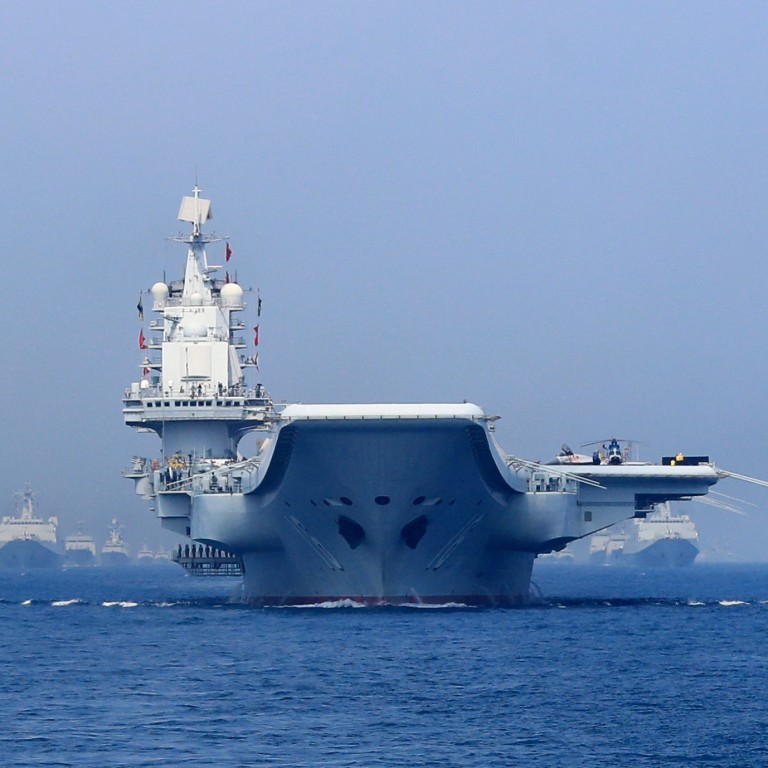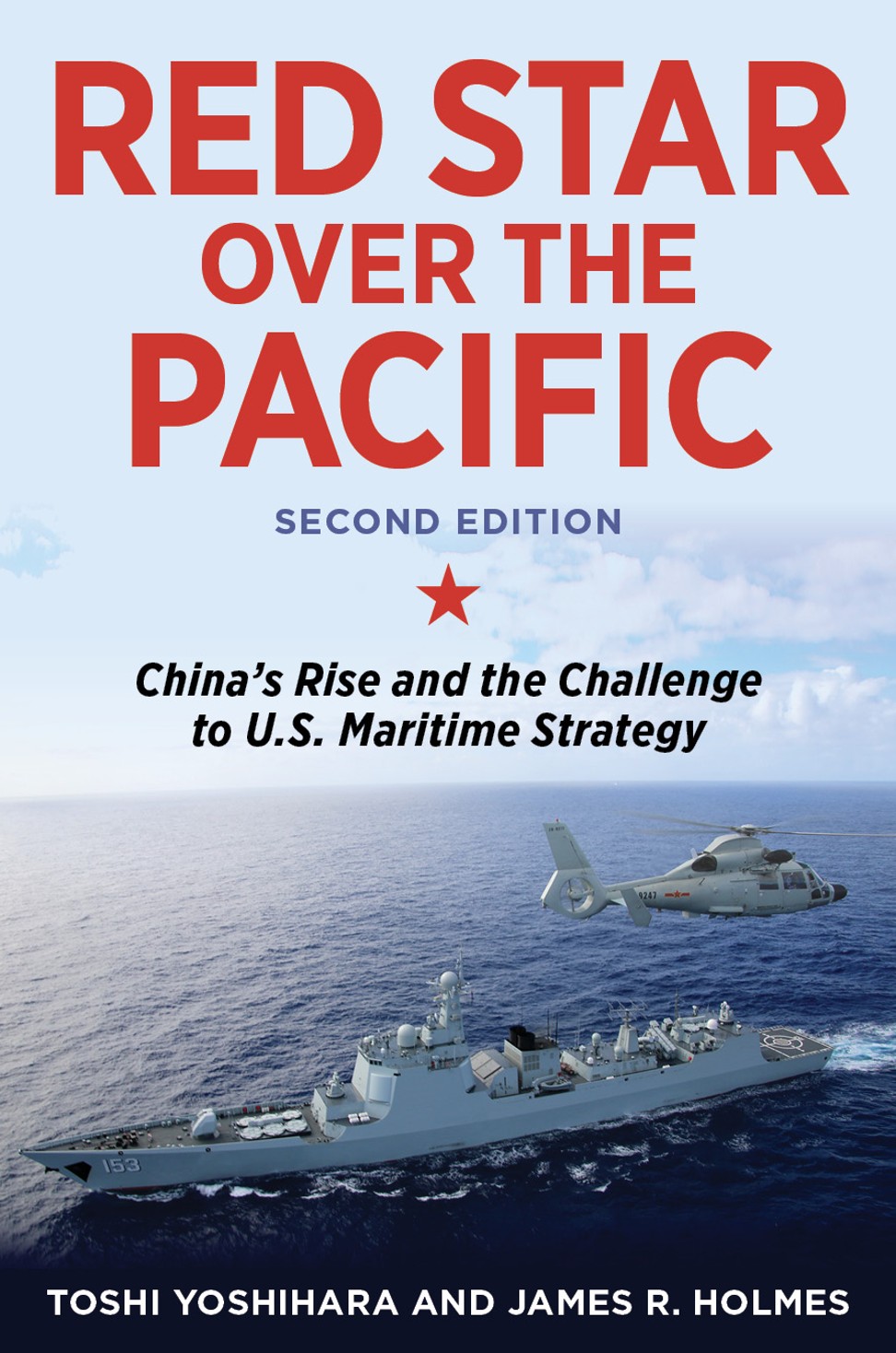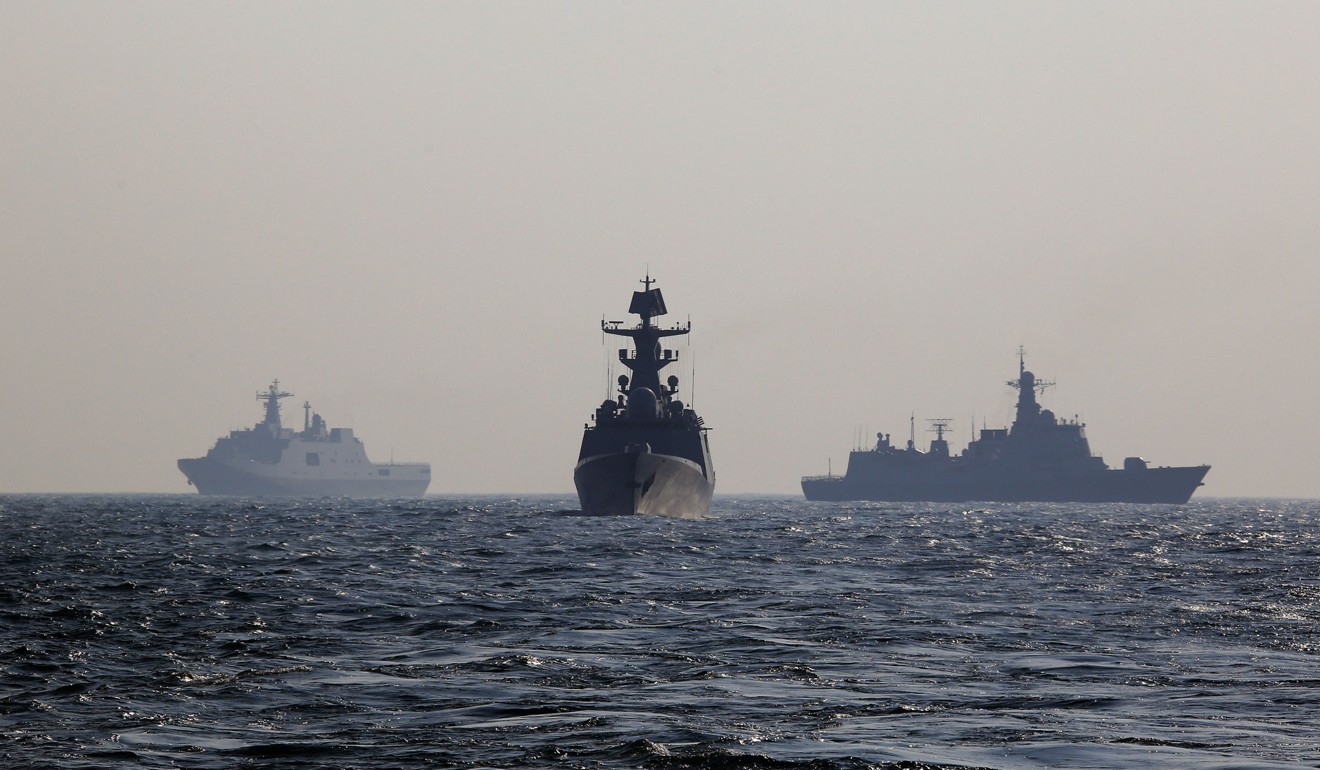
Review | How the US should respond to China’s rising sea threat examined in new book
- US maritime strategy must be geared toward China’s growing power at sea, argues the new edition of Red Star Over the Pacific
- Authors are convinced that reunification with Taiwan would not sate China’s regional or global ambitions
Red Star Over the Pacific, Second Edition: China’s Rise and the Challenge to US Maritime Strategy, by Toshi Yoshihara and James R. Holmes. Published by Naval Institute Press
The renowned British geopolitical theorist Halford Mackinder wrote that great statesmanship requires “geographical capacity” and “an insight into the minds of other nations”.
He explained geographical capacity as a “mind which flits easily over the globe, which thinks in terms of the map, which quickly clothes the map with meaning [and] which correctly and intuitively places the commercial, historical or political drama on its stage.”
China’s military must move beyond self-defence strategy, PLA says
American statesmen who want to develop these qualities to approach the 21st-century world should consult the new edition of Red Star Over the Pacific, written by Toshi Yoshihara of the US Centre for Strategic and Budgetary Assessments, and James Holmes of the Naval War College in the state of Rhode Island. The book combines brilliant geopolitical insight, a careful review of Chinese naval writings, and a thorough knowledge of Chinese and American naval weapons systems, tactics and strategies – both historical and contemporary.
The statesmen and peoples of Asia-Pacific can also gain insights from this book on how an important segment of the US policymaking community thinks about China’s rise, the regional and global geopolitical impacts of that rise, and how the US should react.

Yoshihara and Holmes have mined the relevant Chinese naval and political sources to support their argument that China’s turn to the sea is a “permanent … factor in Asian affairs” that cannot be wished away and that poses a regional, and potentially global, geopolitical challenge to the United States.
The authors build on their earlier work, Chinese Naval Strategy in the 21st Century: The Turn to Mahan (2008), to demonstrate that Chinese naval strategists have studied and profited from the writings of the American naval historian and strategist Alfred Thayer Mahan, especially The Influence of Sea Power upon History (1890) and The Problem of Asia and its Effect Upon International Policies (1900).
Mahan’s writings, for all the dated details, provide a timeless understanding of what Yoshihara and Holmes call the “logic of sea power”, which they note comprises a “trinity of commerce, political willpower, and military force”.
Chinese leaders beginning with Deng Xiaoping have understood the Mahanian notion that “commerce generates wealth and power, supplying the means to achieve larger national objectives”.

Naval power is only one component of a much broader Chinese “maritime strategy” that “conscript[s] all elements of national power, including economic, diplomatic, cultural and legal means”. And all of this is shaped by geography.
Yoshihara and Holmes show that “China’s economic destiny is now inextricably tied to the seas”.
Their chapter on China’s economic geography analyses the country’s three major economic zones (Pearl River Delta, Yangtze River Delta and Bohai Rim) and the major seaports situated along its 14,500km (9,000 mile) coastline. These “peacetime elements of sea power”, the authors write, “constitute essential sources of Chinese prosperity, spurring economic growth that has powered China’s rise to regional and world eminence”.
China’s coastline, and the lands and islands abutting the East and South China Seas, constitute what the authors call the “strategic geography” of China’s sea power.
Chinese naval writings and their aggressive actions and posture in the South China Sea reveal that China views the islands immediately offshore (the so-called “first island chain”) as a geopolitical barrier to the Pacific. This island chain includes Japan, the Ryukyu Islands, Taiwan and the Philippines.
Chinese leaders view this barrier as an American defence perimeter designed to contain China regionally and globally. Many American military strategists since 1949, including General Douglas MacArthur, have viewed it similarly.
Yoshihara and Holmes note that Taiwan is the central link in the first island chain. China’s goal of reunification, the authors note, is not limited to claims of national dignity and sovereignty.
“Taiwan’s return to mainland rule would buttress China’s strategic position, broaden access to resources and trade, and brighten prospects for restoring China’s rightful standing in Asia,” they write.

But the authors are convinced that reunification with Taiwan would not sate China’s regional or global ambitions: “Occupying Taiwan … would break the island chain while guaranteeing the PLA Navy access to the western Pacific,” they write.
What is China’s ultimate goal? Here the authors admit they are “looking through a glass darkly into the future”.
Broadly, the “China Dream” is about having China, after a “century of humiliation”, take its rightful place as the pre-eminent Asian power and as a global power.
Yoshihara and Holmes see both sinister and benign aspects to the China Dream. They are quite sanguine about China’s “Belt and Road Initiative” – perhaps too sanguine – calling it at worst innocuous and at best beneficial to Eurasia. They even suggest that it may result in an economic and diplomatic overextension and diversion from China’s push for maritime supremacy in the western Pacific.
Effective strategy requires a threat. A menace concentrates minds while handing strategists a yardstick to judge their endeavours’ efficacy
The concerning aspect, in their view, is China’s bid to replace the United States as the commanding maritime power in the region, and perhaps beyond.
Here, they advise US policymakers and naval strategists to “temper the sinister aspects of China’s bid for greatness without quashing its benign aspects”. China’s bid for greatness, they write, need not result in war with the United States.
The authors note that China does not now face a land power challenge in Asia, which enables it to devote more resources to its maritime power. This puts China in a better position than the Soviet Union was when it unsuccessfully challenged US sea power during the cold war.
One possible option for US policymakers is to seek better relations with competing Asian land powers (such as India or Russia) in a Nixonian attempt to add continental distractions to US maritime containment, but the authors are surprisingly silent about this prospect. Perhaps they think the Belt and Road Initiative’s Eurasia component is China’s effort to forestall such a development.
South China Sea’s future examined in Great Powers, Grand Strategies
How should the US respond to China’s maritime rise? Yoshihara and Holmes write that the first element of any US response is to recognise that China is a peer competitor. “Effective strategy requires a threat,” they write. “A menace concentrates minds while handing strategists a yardstick to judge their endeavours’ efficacy.”
The end of the cold war temporarily deprived the US of an adversary to plan against. Americans need to recognise that “there will always be a next contender, just as there always has been”.
China is that next contender, so US maritime strategy must be geared toward China’s threat.
Asian Review of Books
